MLC complaints data: 2016–2020
The MLC requires all vessels to have an on-board complaints procedure, allowing seafarers the opportunity to make complaints without concern or repercussion. The MLC also has provisions which gives rights to seafarers to make a complaint to the relevant port State authorities when they believe that their living and/or working conditions on board are below standard.
There has been a consistently increasing trend in the number of MLC complaints received by AMSA between 2016-2018. After a small drop in complaints in 2019, AMSA received a high number of complaints in 2020, double the number received in 2019. These complaints directly relate to the consequences of the COVID-19 pandemic (Figures 8 and 9 below show the breakdown of these complaints).
There has been an overall increasing trend in complaints since 2016. In 2020 AMSA received a significantly high volume of complaints doubling that of 2019. This sharp increase was identified to be directly related to the impact of the COVID-19 pandemic.
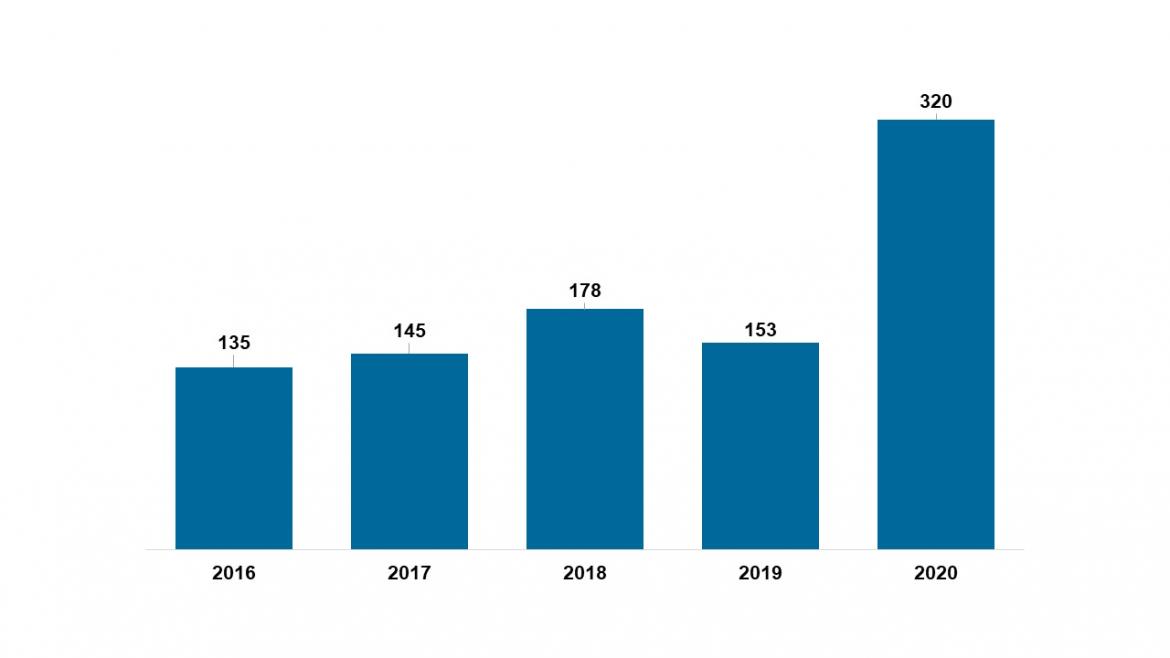
The RAV, a bulk carrier had both complaints under MLC Title 4: Health protection, medical care, welfare, social security protection. Both complaints were resolved with no deficiencies issued.
AMSA received and processed a total of 1181 complaints since the
implementation of the MLC (August 2013)
When complaints are received by AMSA, all necessary actions are taken to ensure the confidentiality of the complainant. AMSA encourages resolution of complaints at shipboard level if appropriate. If a complaint can’t be resolved, AMSA has the jurisdiction to issue deficiencies and detain vessels. AMSA has also banned vessels from Australian ports for serious offences related to compliance with the MLC.
In 2020, AMSA received a total of 320 complaints. Follow up investigations resulted in 79 deficiencies being issued, with 16 vessels detained.
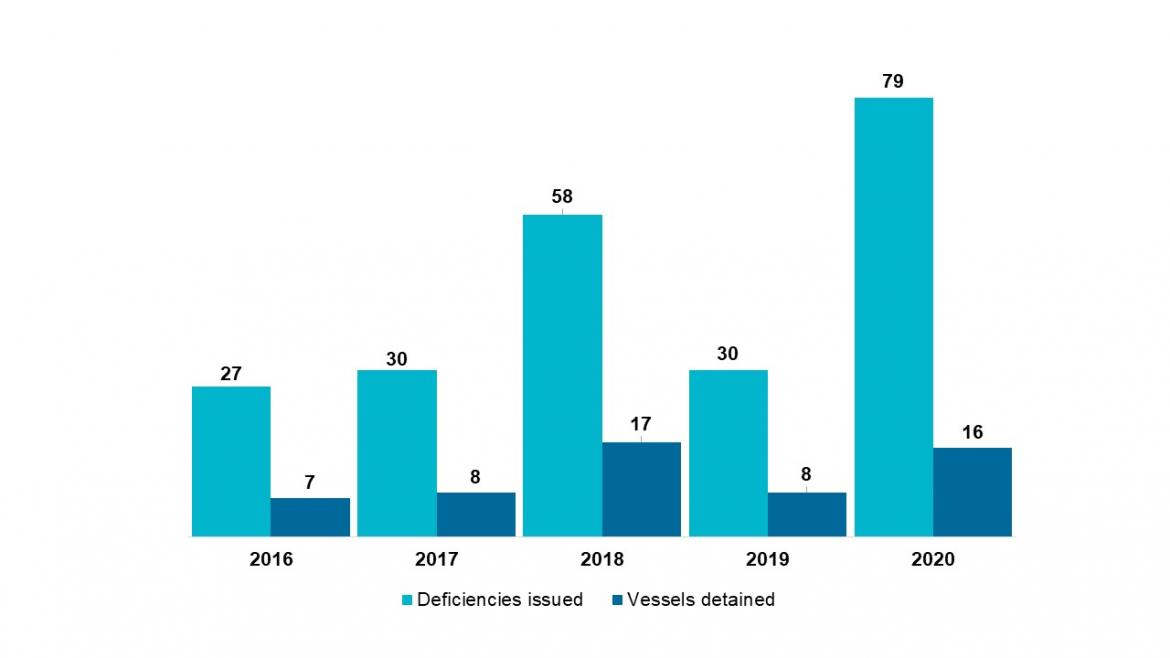
In 2020, 70% of complaints received were from
seafarers engaged on bulk carriers.
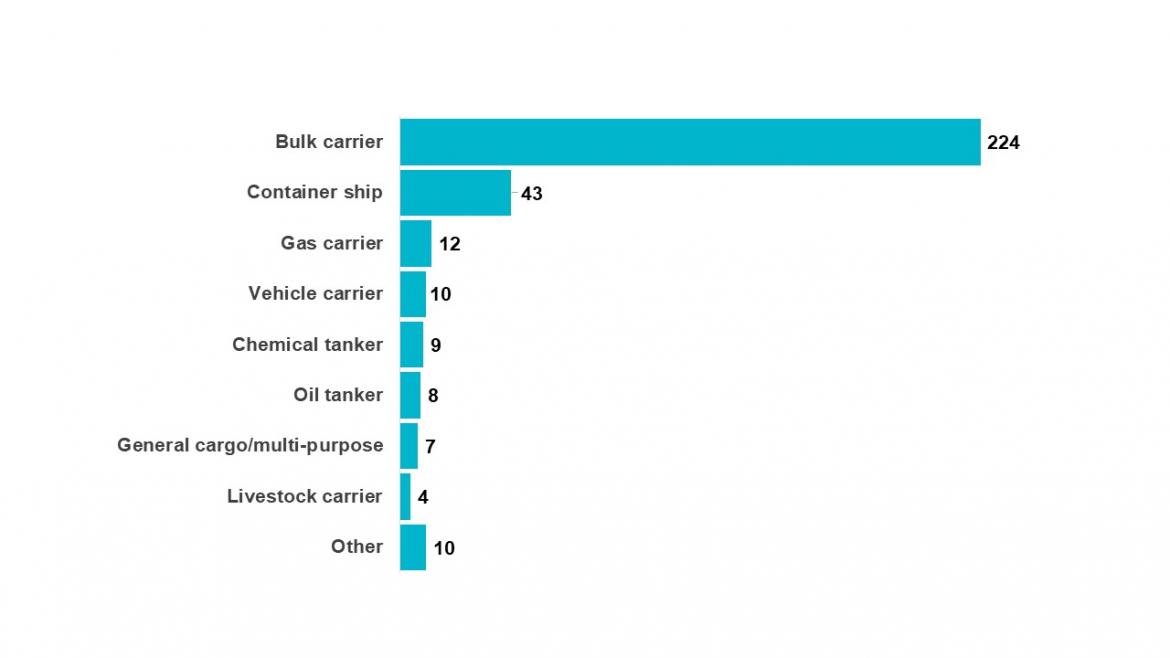
Vessel type | 2016 | 2017 | 2018 | 2019 | 2020 |
Bulk carrier | 90 | 95 | 117 | 88 | 224 |
Chemical tanker | 5 | 4 | 5 | 2 | 9 |
Container ship | 11 | 17 | 18 | 11 | 43 |
Gas carrier | 2 | 2 | 0 | 6 | 12 |
General cargo/multi-purpose | 4 | 7 | 4 | 3 | 7 |
Livestock carrier | 3 | 5 | 9 | 4 | 4 |
Oil tanker | 6 | 7 | 11 | 7 | 8 |
Vehicle carrier | 4 | 1 | 3 | 4 | 3 |
Other | 10 | 7 | 11 | 28 | 10 |
Figure 7 shows a breakdown of 2020 complaints received by the State in which the vessel arrived. Western Australia and Queensland represent the highest number of complaints (30% each) noting also that Western Australia represents the majority (29%) of vessel arrivals in Australia.
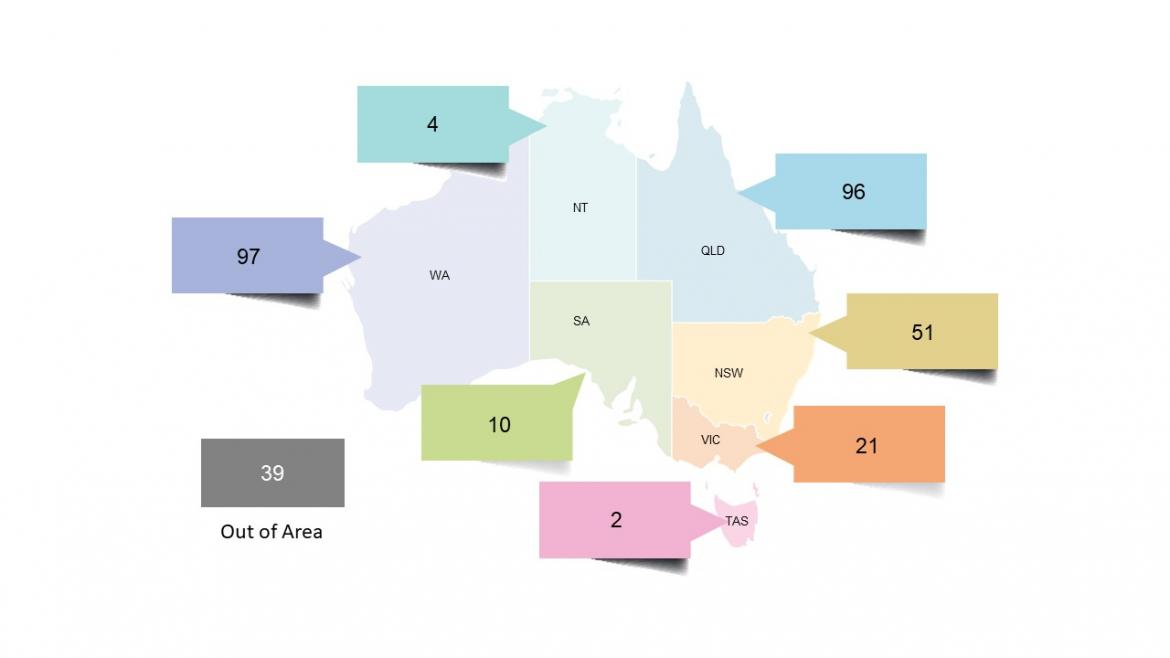
The main body of the MLC (the regulations and the code) is grouped into five main areas (titles) with the data coded accordingly.
Title 1 – Minimum requirements for seafarers to work on vessels
Title 2 – Conditions of employment
Title 3 – Accommodation, recreational facilities, food and catering
Title 4 – Health Protection, medical care, welfare and social security protection (including bullying and harassment)
Title 5 – Compliance and enforcement
Figure 8 categorises the complaints received according to the MLC titles2. The majority (80%) of complaints were related to Title 2 of the MLC; Conditions of employment. This includes seafarer employment agreements, wages, hours of work and rest, entitlement to leave, repatriation, seafarer compensation, crewing levels and career development. The repatriation complaints due to COVID restrictions are captured under this title.
Title 2 has consistently had the highest number of complaints since 2016 (see Table 2 for the 2016 to 2020 MLC categorised data).
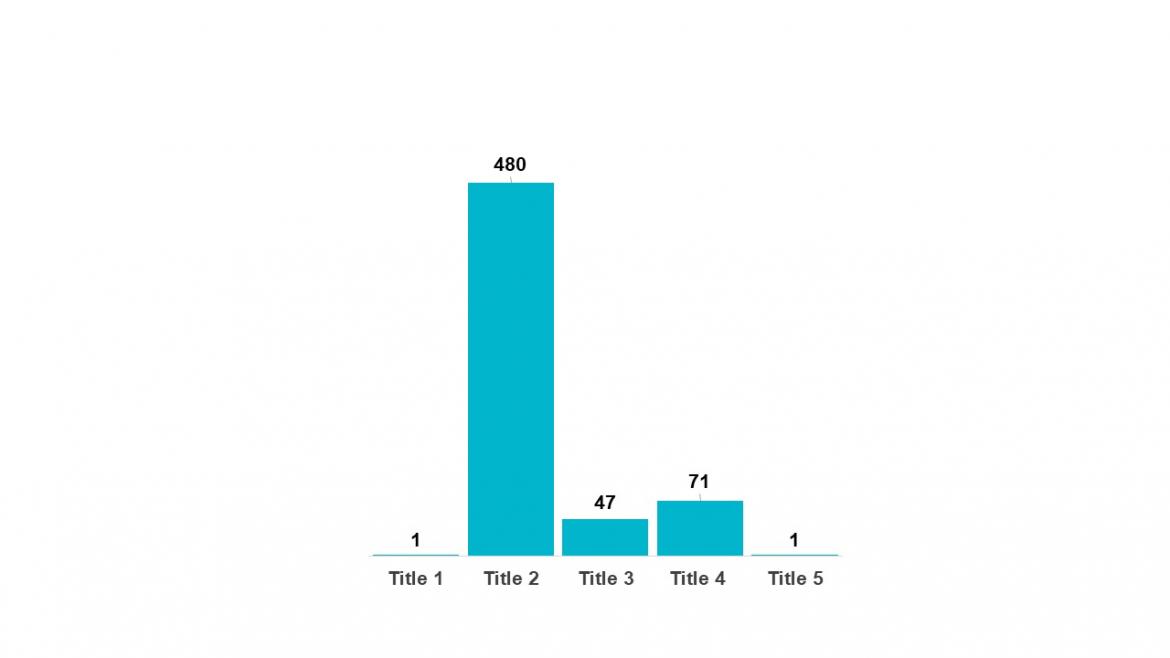
MLC Title | 2016 | 2017 | 2018 | 2019 | 2020 |
Title 1 Minimum requirements | 1 | 2 | 1 | 3 | 1 |
Title 2 Conditions of employment | 99 | 108 | 157 | 108 | 480 |
Title 3 Accommodation, recreational facilities, food & catering | 50 | 48 | 48 | 38 | 47 |
Title 4 Health protection, medical care, welfare, social security protection | 29 | 35 | 61 | 55 | 73 |
Title 5 Compliance and enforcement | 1 | 1 | 7 | 1 | 1 |
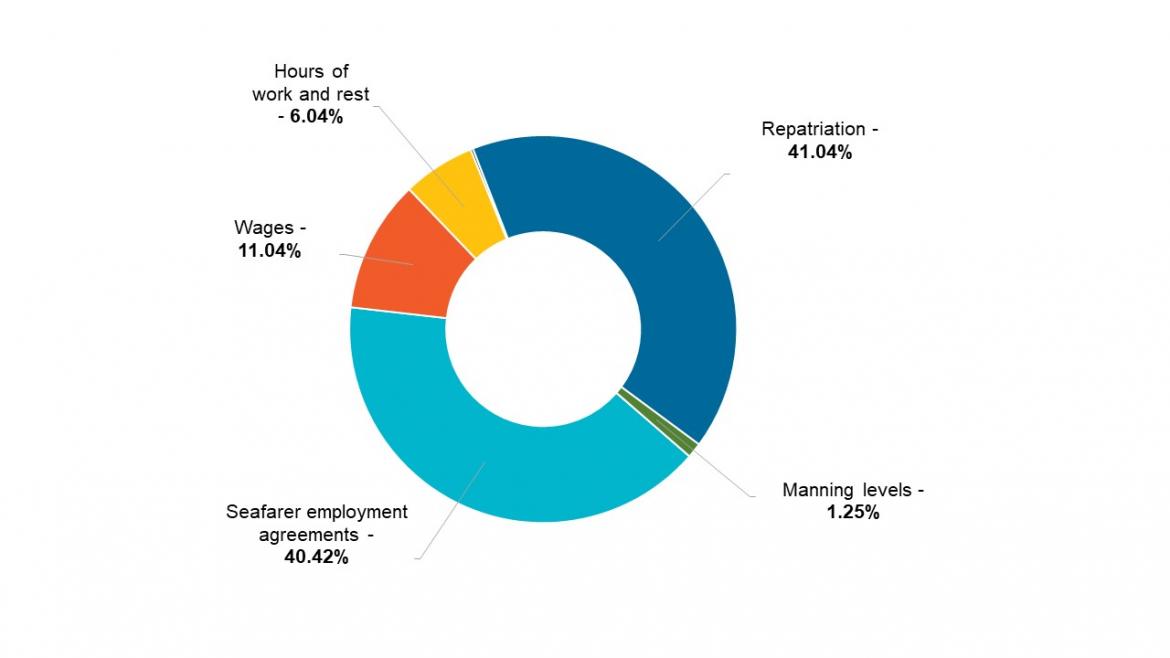
Of the 464 complaints received between 2016 – 2019,
47% were related to issues involving wages. In 2020, while the number of wage complaints remained high, complaints relating to repatriation and seafarer employment agreements made up the majority of the 480 complaints received (41% and 40% respectively).
Of Title 2 complaints, wages have consistently made up the majority from 2016-2019 and the number of wage complaints remained high in 2020. However, the highest volume of complaints received in 2020 related to repatriation and seafarer employment agreements (41% and 40% respectively). This is likely due to the increasingly longer times served onboard and the difficulty faced with repatriation of seafarers during the COVID-19 pandemic.
AMSA’s response to the COVID-19 pandemic repatriation challenges faced by seafarers
As a result, AMSA issued Marine Notice (MN) 04-2020 - Maximum period of shipboard service for seafarers during COVID-19 pandemic advising industry of AMSA’s stance on these issues. From 1 July 2020, AMSA limited maximum continuous periods of sea service without leave to 14 months, in the process ensuring that
- all possible efforts had been exhausted to repatriate seafarers;
- the seafarer willingly accepted the extension; and
- there was a plan to repatriate the seafarer within one month.
This Marine Notice resulted in an initial spike of seafarer complaints related to repatriation, which continued throughout the months of June-September 2020. On 16 November 2020, AMSA issued MN 10/2020, an update to MN 04/2020, extending the temporary arrangements for the maximum period of shipboard service for seafarers during COVID-19 pandemic until 28 February 2021.
Between September–December 2020, the number of complaints related to repatriation declined significantly, which is a clear indication that AMSA’s approach of getting seafarers home to their loved ones for respite, improved the welfare of those serving at sea.
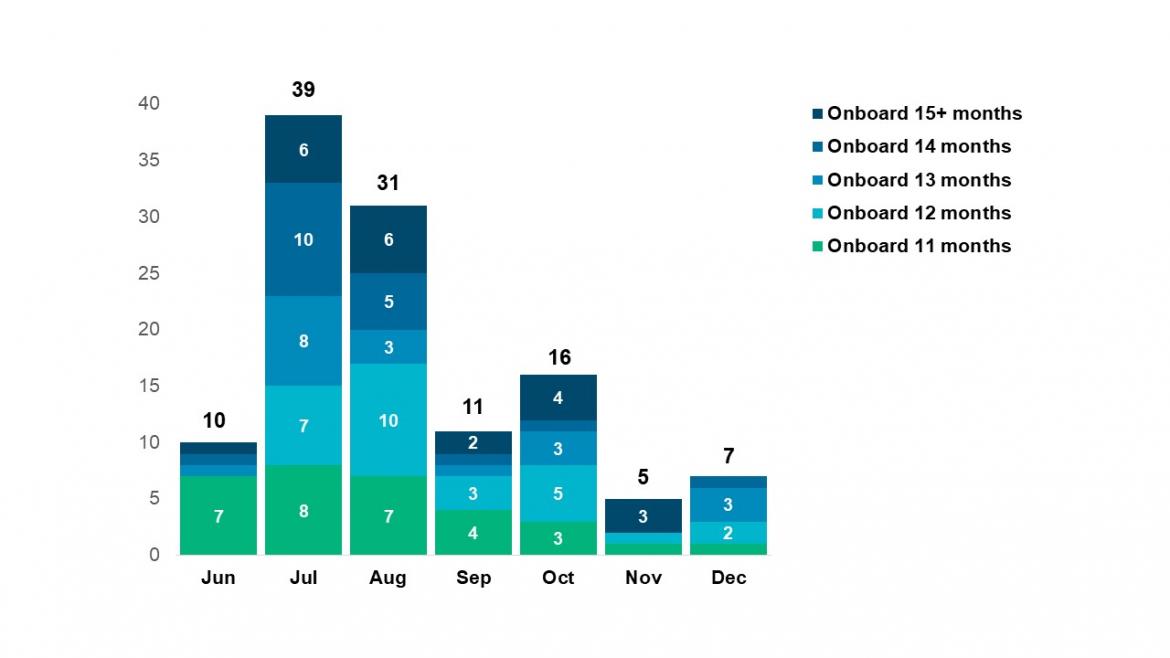
Complaints follow-up
AMSA endeavours to investigate all MLC complaints—and has done so—unless the vessel was out of area. In such cases, AMSA will place alerts on the vessel using an international database and make sure the complaint will be investigated when the vessel next arrives in Australia. In some cases we may refer the complaint to the flag State or port State of the vessel’s next arrival. In all cases we try to ensure the confidentiality of the complainant is maintained.
Figure 11 provides a breakdown of follow up actions undertaken as a result of all complaints with the majority (37.5%) resolved accordingly.
320 complaints were received in 2020. Of these, 100% were actioned, many in close collaboration with seafarer welfare groups.
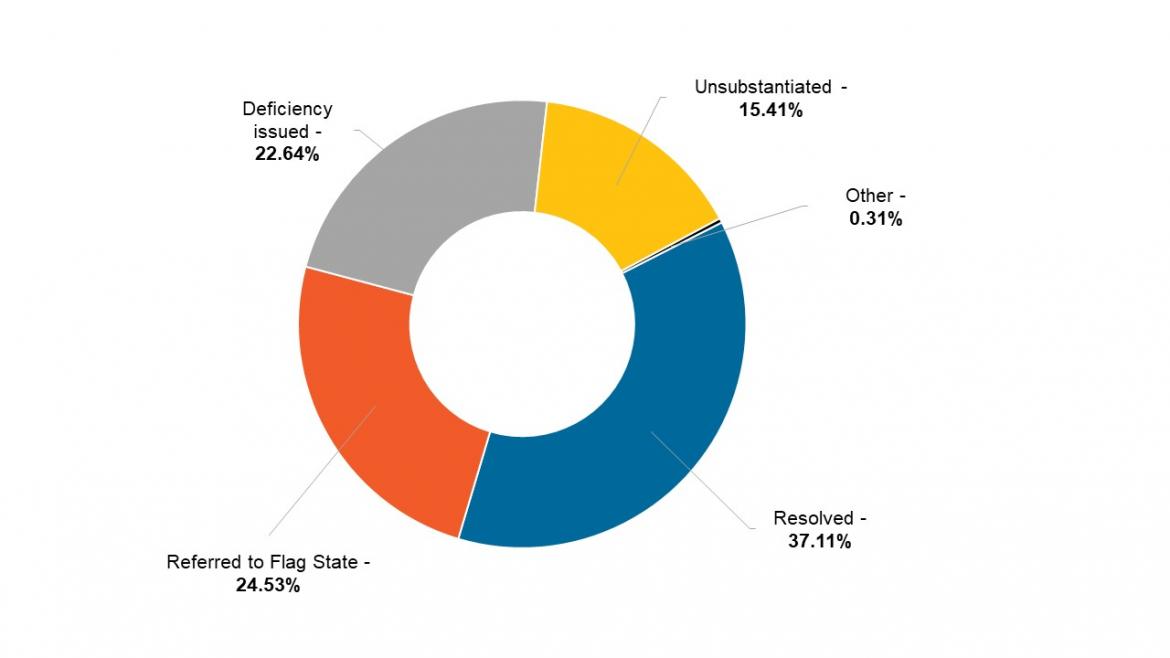
Figure 12 shows a breakdown of complaints by vessel flag State for 2020. These figures have been consistent since 2016, with the highest numbers of referred complaints received from the largest Flag States coming into Australian waters.
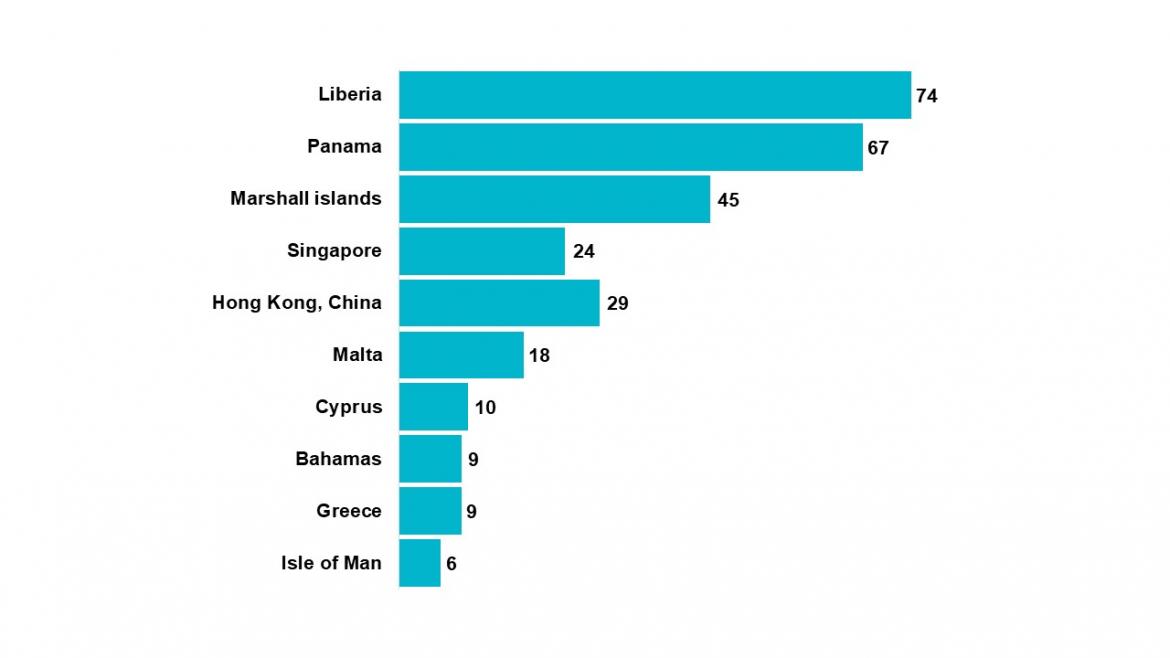
Figure 13 identifies the top ten countries that present the highest rates of complaints normalised3 by the Flag State visits.
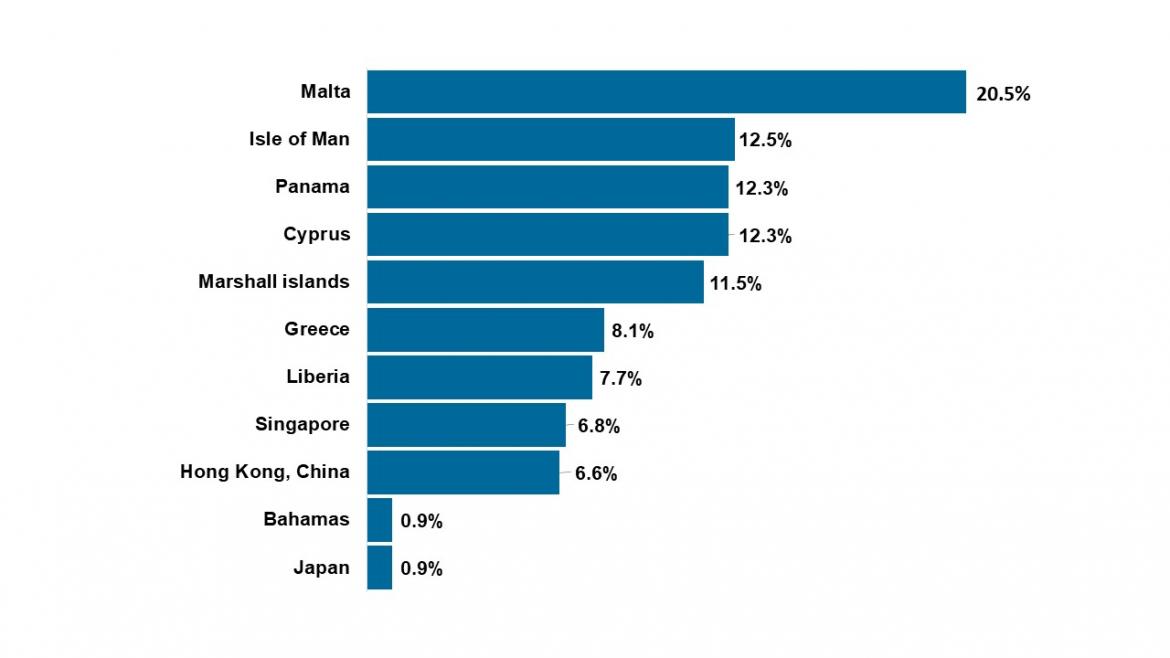
The number of complaints originating directly from seafarers has increased across the years, reaching 56% in 2020.
This may be an indication of seafarer awareness of their rights under the MLC and the knowledge that Australia takes seafarer welfare seriously. Seafarers are therefore more confident that their concerns are taken seriously and treated confidentially when in Australia.
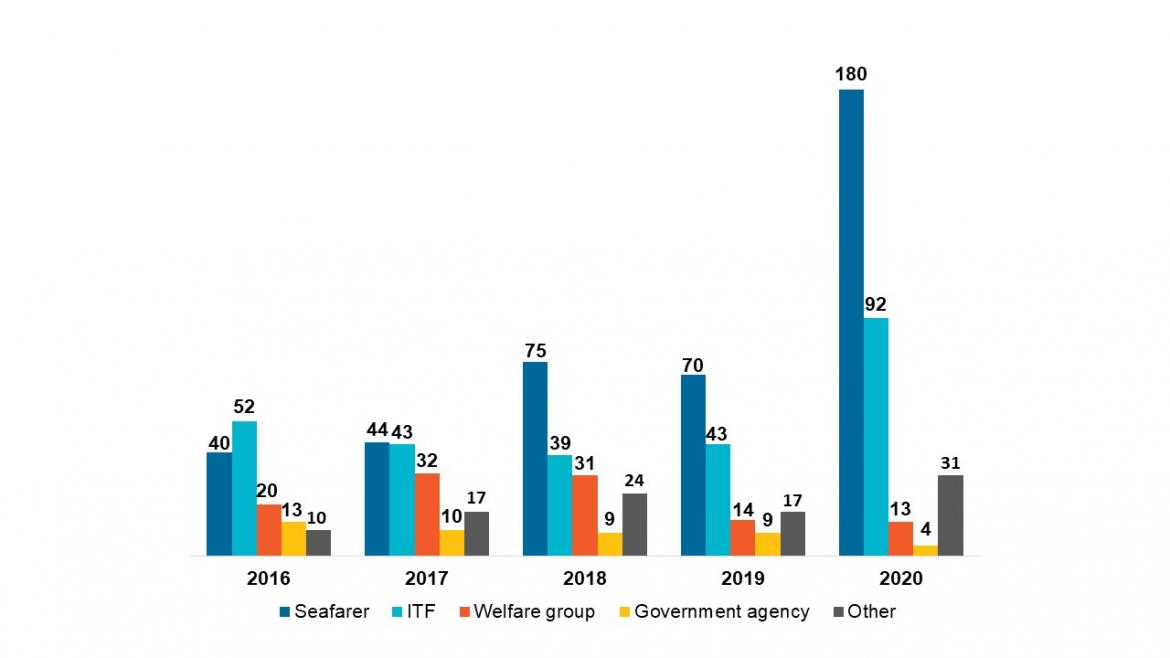
AMSA has a zero tolerance approach in relation to MLC breaches. Since 2016, a total of 12 vessels have been banned from using Australian ports for reasons that primarily include underpayment of wages under the MLC.
In 2020, four vessels were banned from Australian ports due to MLC breaches. All four vessels were found to have withheld payments or underpaid crew, with two also breaching standards for quantity and quality of food. These have been banned for a period of six to twelve months. A total of $405,000 in wages was recovered from vessels in 2020.
Since 2016, 12 vessels have been banned from Australian Waters due to MLC related detentions.
Footnotes:
1The 2020 data includes two complaints received from a Registered Australian Vessel (RAV).
2In some cases more than one regulation has been detailed in a single complaint.
3Data is normalised to identify the complaint rate by flag population (in Australian waters) rather than an absolute value *excludes Flag States with port arrivals under 350